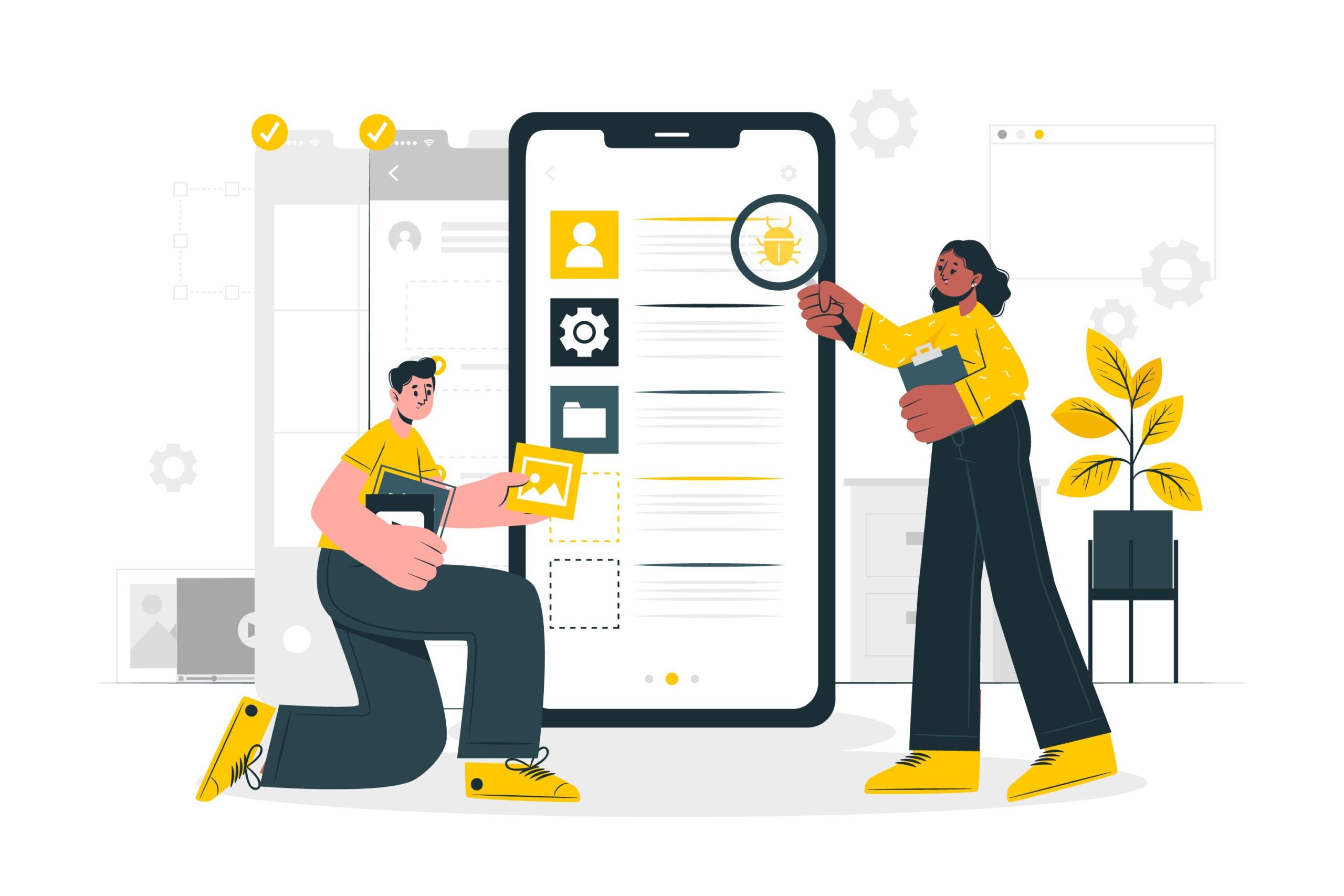Creating an exceptional user experience is at the heart of every successful software application. A seamlessly designed User Interface (UI) is the bridge that connects a user to the functionality and essence of a product. However, ensuring this smooth experience across diverse devices, platforms, and user interactions presents a unique set of challenges. Welcome to our blog, where we delve into the world of User Interface Testing (UI testing) and uncover the common challenges that often arise in this domain. From unclear requirements to the ever-evolving landscape of cross-platform compatibility, we explore these obstacles and provide insights and strategies to triumph over them, ensuring a polished and flawless UI for your software.
Understanding User Interface Testing
User Interface Testing, often abbreviated as UI testing, is a crucial phase in the software development lifecycle that involves evaluating the graphical interface of an application to ensure its functionality, usability, and overall user experience meet the intended requirements. The main goal of UI testing is to verify that the application’s UI operates as expected and provides users with an intuitive, error-free, and aesthetically pleasing experience.
UI testing involves examining different elements of the interface, such as buttons, menus, forms, images, and text, to confirm they perform their designated actions correctly and align with the specified design guidelines. This process is essential in identifying and rectifying any inconsistencies or issues that could potentially hinder the user’s interaction with the software.
Common Challenges in User Interface Testing
When engaging in User Interface Testing (UI testing), you will encounter several challenges that can complicate the process of ensuring a seamless user experience and adherence to design requirements. Let’s delve into some of the most common challenges faced during UI testing and how you can overcome them:
1. Lack of Clear Requirements and Specifications
You might often face the hurdle of unclear or insufficient UI requirements and specifications. Vague guidelines make it hard to create precise test cases and accurately evaluate the UI. Without a thorough understanding of expected behavior and design guidelines, your UI testing becomes less efficient and prone to errors.
Overcoming Strategy:
When you encounter unclear requirements, it’s crucial to communicate effectively with designers, developers, and stakeholders. Regular meetings and collaboration sessions can help clarify expectations. Also, create a detailed UI design document outlining
2. Variability in Devices, Browsers, and Screen Sizes
The vast range of devices, browsers, and screen sizes available in the market adds complexity to UI testing. Making sure that the application’s interface functions consistently across this diverse landscape can be challenging. Each device and browser may interpret UI elements differently, leading to inconsistencies in layout, rendering, and functionality.
Overcoming Strategy:
To address the variations in devices and browsers, opt for a responsive design approach. Create UI elements that adapt to different screen sizes. Use cross-browser testing tools and emulators to ensure consistent UI functionality across a broad range of devices and browsers.
3. Dynamic Content and Real-Time Interactions
Modern web applications frequently rely on dynamic content and real-time interactions to enhance user engagement. However, these dynamic elements pose a challenge during UI testing. Automated tests may struggle to adapt to real-time updates or changing content, resulting in test failures or inaccurate results.
Overcoming Strategy:
Automation frameworks that support dynamic content testing, along with synchronization techniques, can help manage dynamic content and real-time interactions. Incorporate explicit waits and synchronization commands in your automated tests to handle dynamic updates and ensure accurate UI validation.
4. Cross-Platform Compatibility
As you cater to users accessing applications on various platforms, achieving cross-platform compatibility is crucial. UI testing needs to cover a spectrum of operating systems (iOS, Android, Windows), browsers (Chrome, Safari, Firefox, Edge), and even different versions of these platforms. This diversity increases the testing effort and necessitates comprehensive cross-platform testing.
Overcoming Strategy:
Utilize cloud-based testing platforms that allow simultaneous UI testing across various platforms. These platforms offer a cost-effective way to ensure compatibility without needing an extensive device or platform infrastructure. Prioritize testing on the most popular platforms based on your application’s target audience.
5. Integration with Other Systems or Third-Party Components
Applications often integrate with external systems or incorporate third-party components. Testing the UI in conjunction with these integrations adds complexity. Changes in external systems or components can impact the UI behavior, making it essential to ensure seamless integration while maintaining UI functionality.
Overcoming Strategy:
To achieve seamless integration, establish clear communication channels with the teams managing external systems or third-party components. Create detailed documentation outlining the expected behavior of the integrated components within the UI. Regular coordination with these teams is essential to address integration issues promptly.
6. Localization and Internationalization
When dealing with a global audience, localization and internationalization challenges come to the forefront. Adapting the UI to different languages, regions, and cultural expectations while maintaining functionality and design consistency can be daunting. Each language may have unique formatting requirements, impacting the layout and appearance of the UI.
Overcoming Strategy:
Design the UI with internationalization in mind to handle localization effectively. Keep text separate from the UI code to facilitate easy translation. Collaborate with native speakers or localization experts to validate
7. Accessibility Compliance
Ensuring your UI complies with accessibility standards is essential to cater to all users, including those with disabilities. Testing for accessibility challenges involves confirming that the UI is navigable and understandable using assistive technologies such as screen readers. It also entails verifying the proper labeling of UI components and adherence to color contrast guidelines.
Overcoming Strategy:
Integrate accessibility testing into your UI testing process. Use automated accessibility testing tools to identify common issues and manually verify compliance with accessibility standards. Educate your team about accessibility guidelines and stress the importance of inclusive design.
8. UI Responsiveness and Performance
Users expect applications to be responsive and perform well across various network speeds and device capabilities. Testing the UI’s responsiveness to different screen sizes and resolutions, as well as evaluating its performance under varying network conditions, is crucial. A UI that lags or freezes can result in a poor user experience.
Overcoming Strategy:
Utilize performance testing tools to measure UI responsiveness and performance across various devices and network conditions. Identify bottlenecks and optimize UI code to enhance speed and responsiveness. Monitor and analyze performance metrics to proactively address any issues.
9. Maintaining Consistency Across Updates
As your application evolves, updates and new features are introduced. Ensuring that these updates maintain a consistent UI experience across the application can be a challenge. Changes to one part of the application shouldn’t negatively impact the usability and familiarity of other UI elements.
Overcoming Strategy:
Implement a comprehensive regression testing strategy that includes UI regression testing whenever updates or new features are introduced. Automated regression testing ensures that existing UI functionality remains intact after updates. Maintain a well-structured test suite to efficiently validate UI consistency across the application.
Best Practices for Effective UI Testing
To ensure a robust and reliable User Interface Testing (UI testing) process, adopting best practices is key. Here are the top practices to optimize your UI testing efforts:
1. Start Testing Early and Continuously
Initiate UI testing as early as possible in the development cycle to catch issues at their inception. Incorporate UI tests in continuous integration pipelines, enabling frequent testing with each code commit, promoting faster feedback loops, and reducing the likelihood of encountering major issues later in the development process.
2. Develop a Robust and Scalable Automation Strategy
Strategize and prioritize test automation to cover critical UI features. Leverage automation frameworks and tools that align with your application’s technology stack. Aim for reusable, maintainable, and scalable test scripts that can efficiently handle UI changes and updates.
3. Regularly Update Tests to Accommodate UI Changes
The UI is prone to frequent changes and updates. Maintain a proactive approach by reviewing and updating UI test scripts to reflect these changes accurately. Incorporate version control to track changes effectively and ensure that automated tests remain relevant as the application evolves.
4. Prioritize UI Test Cases Based on Risk and Impact
Identify critical and high-risk areas of the UI and prioritize test cases accordingly. Focus on the core functionalities and critical user flows to ensure that the most vital aspects of the application are thoroughly tested. This approach maximizes test coverage within the constraints of time and resources.
5. Diversify Testing Scenarios for Comprehensive Coverage
Design test scenarios that encompass a wide range of user interactions, including valid and invalid inputs, edge cases, and boundary conditions. Test for different user roles, devices, browsers, and network conditions to ensure the UI’s functionality and performance under diverse circumstances.
6. Utilize Page Object Model (POM) for Maintainable Tests
Implement the Page Object Model (POM) to enhance test maintainability and reusability. POM separates UI locators and interaction methods from test scripts, allowing for easier updates and maintenance of UI-related changes.
7. Perform Cross-Browser and Cross-Platform Testing
Validate the UI’s compatibility across various browsers, operating systems, and devices to ensure a consistent user experience. Leverage testing tools like Playwright for UI Automation testing, that facilitate cross-browser and cross-platform testing, enabling early identification of any compatibility issues.
8. Incorporate Load and Performance Testing
Integrate load and performance testing into your UI testing strategy to assess the UI’s responsiveness and stability under different load conditions. Identify performance bottlenecks and optimize the UI to deliver a seamless user experience even during peak usage.
9. Implement Code Reviews and Collaborative Testing
Encourage code reviews and collaborative testing to ensure the quality of UI test scripts. Multiple perspectives can uncover overlooked issues and lead to improvements in test coverage and effectiveness.
10. Document Test Cases and Results Thoroughly
Document UI test cases, including test steps, expected outcomes, and actual results. Maintain a detailed record of test execution results, making it easier to trace defects, analyze trends, and report on the application’s UI quality.
Final Words:
The world of software testing is evolving rapidly, and so is UI testing. Machine Learning and AI in software testing are poised to play a significant role in UI testing automation, revolutionizing how we ensure the quality of user interfaces. AI-powered tools can adapt and learn from changes in the UI, automating the updating of test scripts and significantly reducing maintenance efforts.
Additionally, the rise of headless and component-based architectures will reshape UI testing. Headless testing allows for faster and more efficient testing by focusing on the backend logic, while component-based testing allows for reusability and a more modular approach to UI testing. These advancements will provide an agile and efficient framework to navigate the complex UI landscape.
Embrace the forthcoming changes in UI testing methodologies and technologies. Stay updated, adapt to emerging trends, and integrate innovative solutions into your UI testing toolkit. The future promises an exciting transformation in UI testing, ultimately leading to even higher-quality user interfaces and, consequently, happier users. Happy testing!

